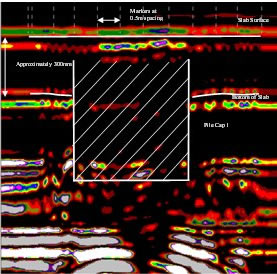WHERE CAN GPR BE USED?

As with all types of radar imaging, Ground penetrating radar delivers varying degrees of accuracy based on the conditions.
SOIL PROPERTIES & GROUND MATERIAL
GPR functions by sending a tiny pulse of energy in to the ground then recording the effectiveness of reflected signals and time it requires them to come back to the receiver. A scan consists of a series of pulses over an individual area. While some of the GPR energy pulse reflects back to the receiving antenna, some energy continues to travel through the material until it dissipates, or the scanning session simply ends. The rate of signal dissipation varies widely, depending on the properties of the materials.
It can be applied to a range of ground materials, including:
Soil,
Rock,
Ice,
Fresh water,
Pavement,
Concrete structures.
As the energy pulse enters a material with different dielectric permittivity or other electrical conduction properties, it produces a reflection. The strength, or amplitude, of the signal is the consequence of the contrast in the dielectric constants and conductivities between the two materials. A pulse moving from wet sand to dry sand will produce a very strong reflection, for example, in comparison to the relatively weak reflection produced by moving from dry sand to limestone.
DEPTH

The bottom itself can limit how deep GPR signals penetrate around 100 feet (30 meters) deep. The bottom has electrical resistivity, this means it opposes the flow of electric current to some degree. As the signal penetrates deeper, it naturally gets less effective. This depends mostly on the sort of soil or rock being surveyed and the frequency of the antenna used. For https://blogfreely.net/homeconstruction537/how-come-gpr-important , the maximum penetration depth in concrete is usually about 2 feet. In moist clays along with other high conductivity materials, GPR signals depth is significantly shallower, reaching about 3 feet (1 meter) or less.
https://postheaven.net/construction323/where-can-gpr-be-used of the substrate can be one factor. Dielectric permittivity is the ease with which materials become polarized. The number of water within the material greatly affects dielectric permittivity. Certain materials can become polarized in the presence of an electric field.
